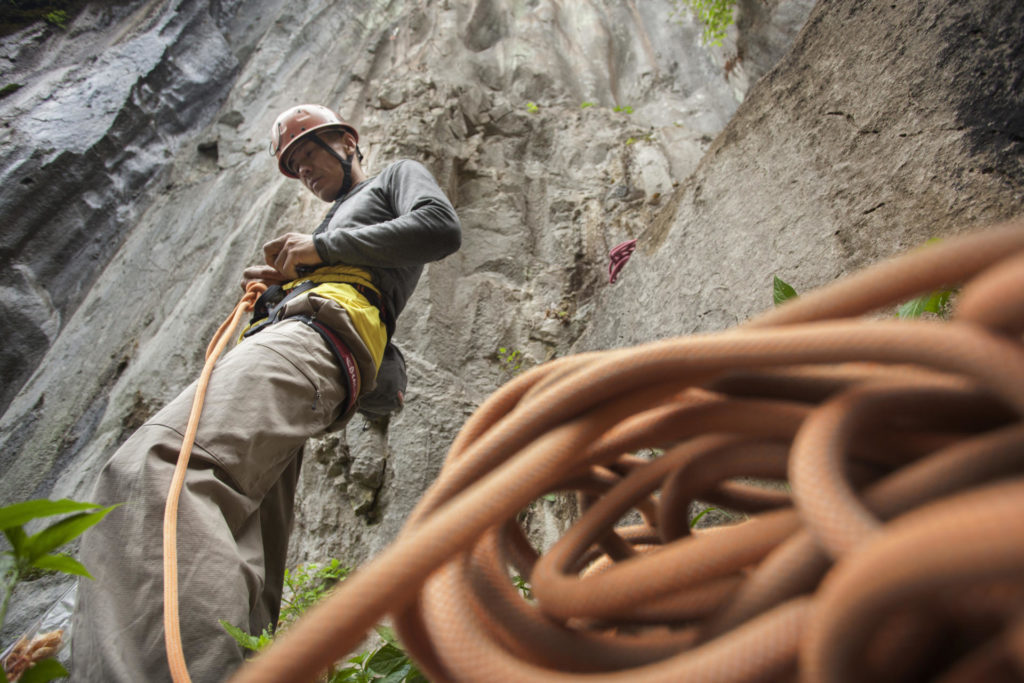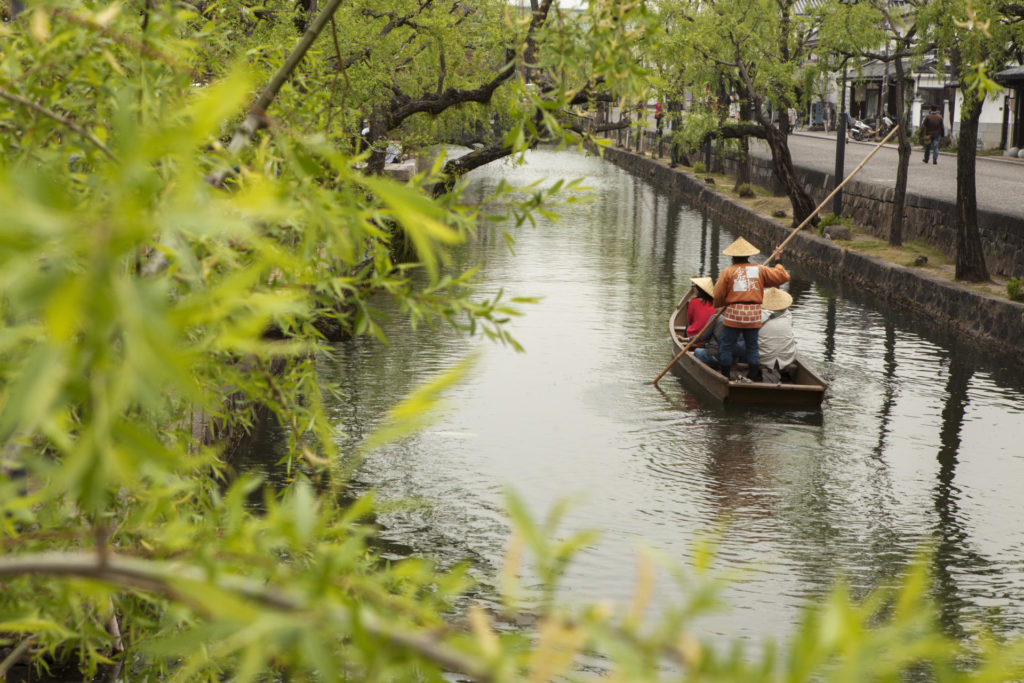“We are almost there,” Yuji turns to me and says as we wind up a mountain road. I open my tired eyes and then everything goes black as we enter a tunnel. The blinding light that comes next gives way to an amazing rock feature so steep it overhangs the road. “What do you think?” he asks me. “Looks like heaven. Why haven’t you brought me here before?” I reply.

Okayama Prefecture, like most of Japan, has a rich, fascinating history that dates back centuries. Most visitors are drawn to the historical district of Kurashiki or hiking in the beautiful mountains. We, on the other hand, are looking for new routes to climb in the Hayama area, the epicenter of climbing in Okayama, located about 60 km. northwest of Okayama City.
Sachi Amma, the current World Cup climbing champion, was specifically planning to try his luck at one of Yuji Hirayama’s old routes; one that had never been successfully completed, called Karachi Direct.
Yuji is widely recognized as Japan’s most famous rock climber and, because of his long climbing career, he is known everywhere in Japan rock-climbing circles. As we walked to the base of the cliff, the climbers were surprised to see “The Sensei” in Okayama.

Safety first.
They politely asked for photos with these two Japanese rock stars, and an impromptu photo session ensued. After a number of shirts, harnesses and shoes were signed, we got to work. It had been more than nine years since Yuji had been to this area to climb, and he was anxious to show Sachi around.
Sachi quickly warmed up on some easy routes, and Yuji did the same. Yuji had his eye on a route called Aozura, which only one person, an Okayama climber named Sakae Nakahara, had climbed.
Sachi and Yuji shared beta (a term to describe the correct movement required to properly climb a route) on Karachi Direct, possibly Japan’s most difficult rock climbing route. This was Sachi’s “project” for the trip. Over the next three days, Sachi relentlessly threw himself at it.

“This is one of the hardest routes I have tried. I really hope it is possible,” Sachi commented the night before our rest day.
On our day off we decided to drive an hour to Kurashiki and its well preserved Bikan Historical District. This area is bifurcated by an old canal perfectly framed with sweeping willows and sakura. The district seems nearly untouched by time, transporting you back hundreds of years. The 17th century buildings lining the canal are beautiful, stretching out in all directions. You can even hire a Japanese gondola to take you down the canal, floating under countless magnificent stone bridges.
None of us had been here before, so we took our time exploring the streets, curious what lay around the next corner. Temples, old warehouses and tea houses were scattered in the area, as well as a number of great museums, such as the Ohara Museum of Art, where you can view works by Renoir and Monet. Wander down nearly any side street, and you’ll find local sweets and ice cream as well as the warm hospitality of locals.

Walking down the streets in Kurashiki is like stepping back in time. 
A group of tourists take a boat ride on the beautiful canal in the Bikan district.
When we returned to Hayama, Yuji was more determined than ever to attack his project. After a short final session, he successfully climbed Aozura, a grade 5.14b route (very difficult), becoming the second person ever to climb the route. This route is tough from start to finish with small, sloping edges and a very technical final move. All said, Yuji climbed the route about eight times, working on each sequence.
“The limestone here is very good, and the wall is steep. There are many great routes. If this wall was close to Tokyo it would be very crowded,” Yuji says as we head back to the lodge.
Karachi Direct proved more elusive. The route goes through the steepest part of the large roof. Yuji climbed most of the route many years ago, but this new route includes an additional link through a two-move section, which, in his opinion, makes the line “next level.”
Though Karachi Direct remained unclimbed after we left, it was well worth the effort, and the road trip from Tokyo had been a blast.
“I plan on coming back very soon,” Sachi told me on the drive back home. “This is an amazing route and now I know it is possible,” he added with a smile.
Getting There
The best way to explore the climbing areas in Okayama is by car. You can either drive from Tokyo or take the bullet train to Okayama City and then rent a car. Driving from Tokyo takes about eight hours. Take the Shin-Tomei through Shizuoka, Nagoya and Kyoto. From Okayama City, make your way northwest toward Takahashi. Use this as a starting point and stock up on food or supplies for your outings here. Grab one of the blue “Guide to Japan’s 100 Free Climbing Areas” guidebooks for detailed directions to any one of the dozens of climbing areas here.
Accommodation
In the Takahashi area, there are a few Japanese-style hotels, but I suggest staying at Cottage Kinomura (コテージ木の村). Kinomura is owned and operated by Moriji Sugita, a pioneer in the Okayama area. The simple cottage has electricity, hot water and a fully operational kitchen. There is an upstairs area with ample space for stretching and relaxing after a long day losing skin on the perfect limestone in the area.







